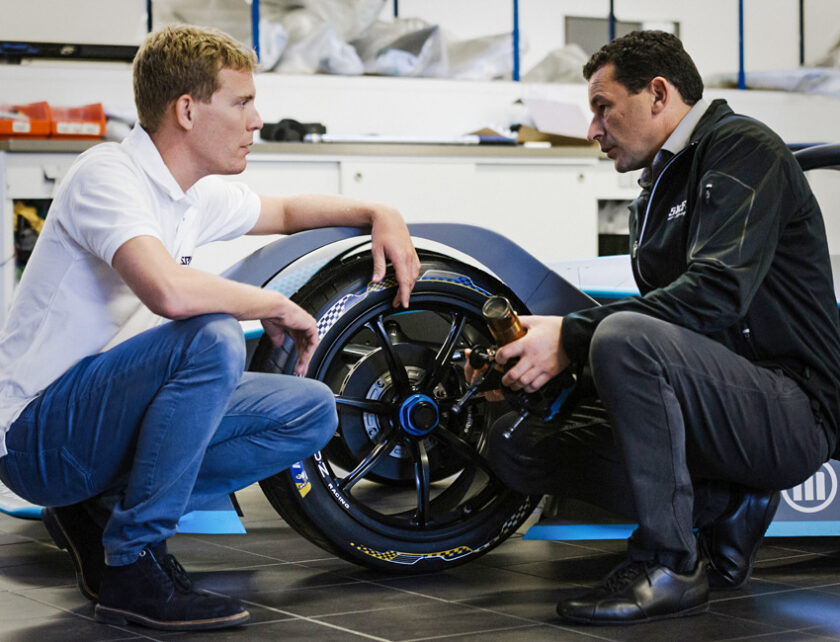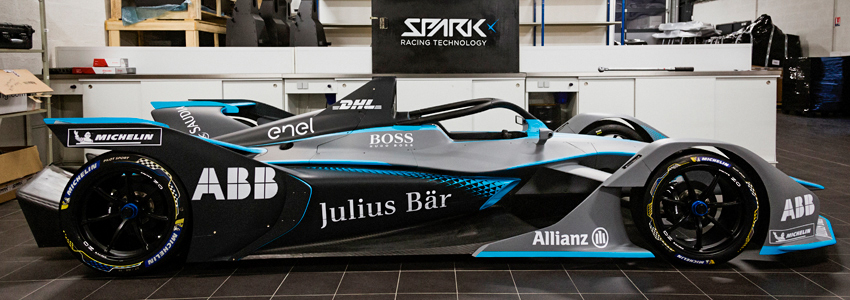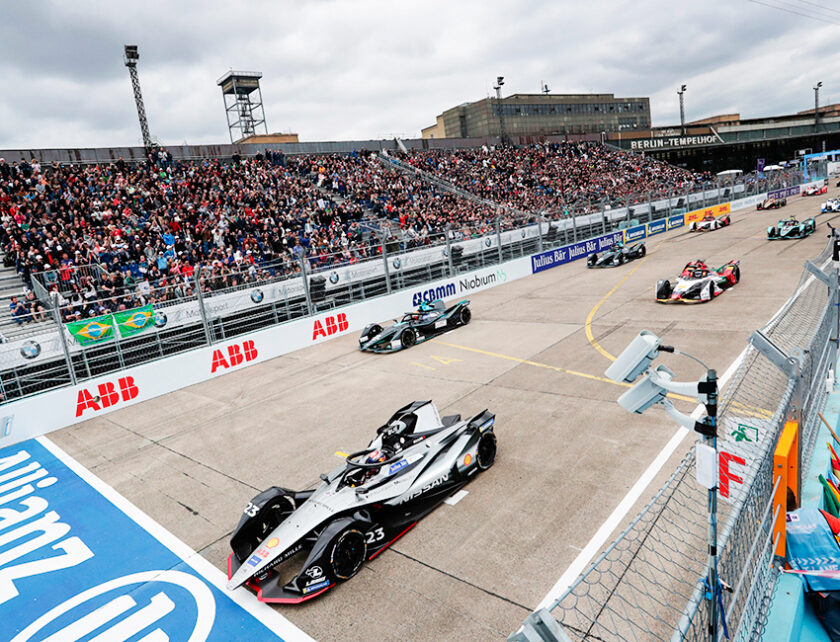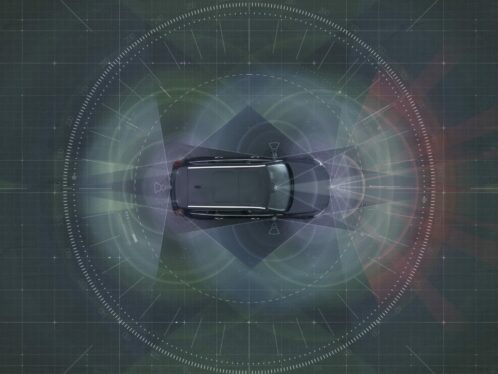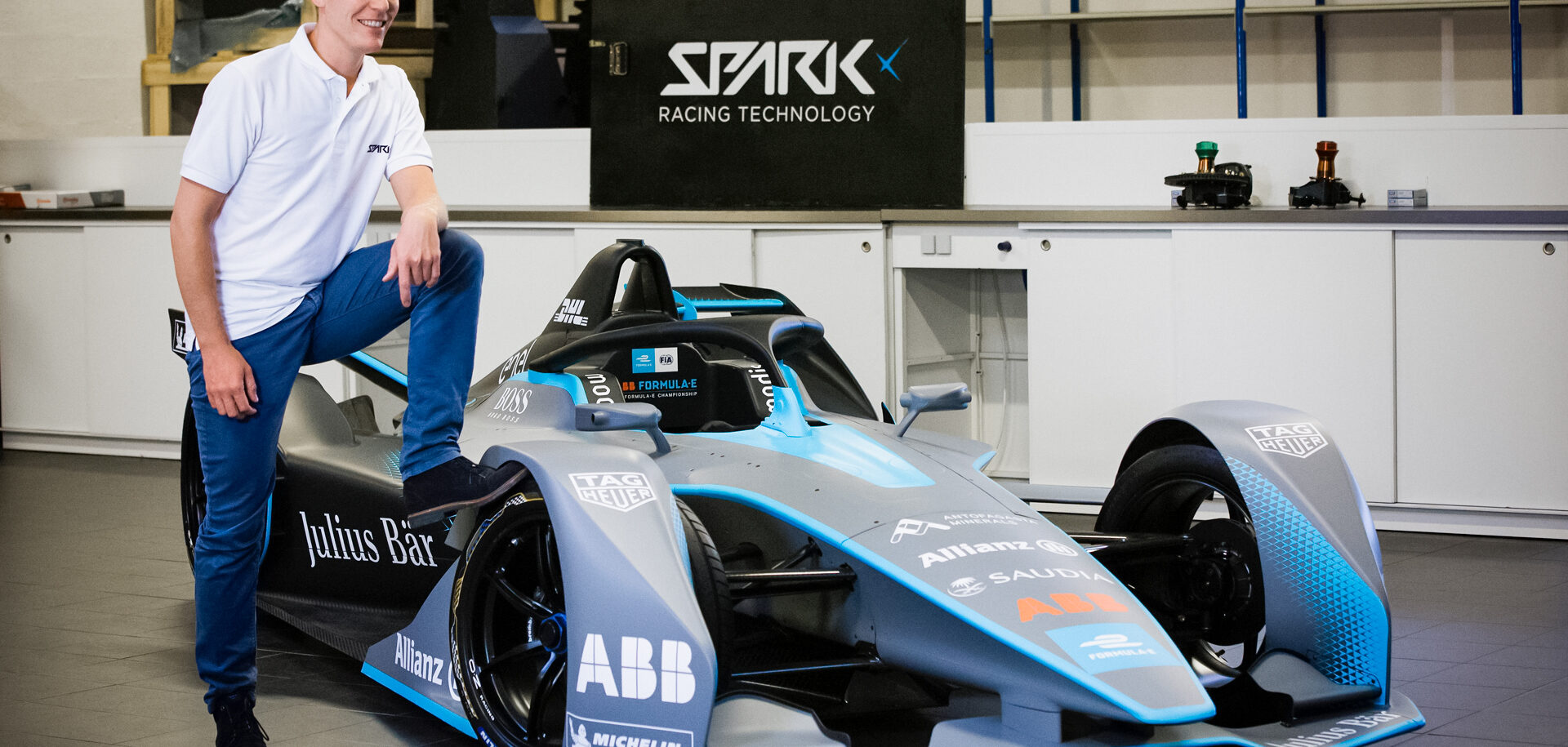
A game changer in motorsport
Electric mobility is at the heart of the environmental transition we are witnessing today. We see this even in motorsport, with the Formula E championship in which race cars that are 100 percent electric compete on urban circuits. Not only are these race cars electric but they are also silent, thanks to technology developed by Spark Racing Technology.
Fans of Formula 1 dreamt about it, and the E-Prix realized it: a single-seater car race that is 100 percent electric. The first Formula E championship took place in 2014 along a two-kilometre route in the heart of Paris. Since its launch, the new Formula E championship has expanded to comprise 10 races, all of which take place on urban circuits mapped out in the centres of such cities as New York, Hong Kong, Paris, Rome and Riyadh.
SKF and Spark Racing Technology
SKF, which has long experience in developing and manufacturing parts for car racing competition, supplies all the wheel bearings that equip Formula E cars with Spark Racing Technology. For the first generation of the 100 percent electric single-seater, SKF provided its hub bearing unit (HBU1) that had been tried and tested in competition. For the second generation the company changed to a more rigid system – matched sets of hybrid angular contact ball bearings incorporating a spacer. The use of bearings with ceramic balls enabled SKF to reduce the weight of the wheel bearings by 880 grams overall.
The Spark Racing Technology (SRT) adventure began in 2012 when Frédéric Vasseur, an engineer specializing in sports mechanics, thought it was time to break into new technology in the domain of traditional single-seater race cars by introducing electric propulsion. In 2013, the project of an FIA (Fédération Internationale de l’Automobile) world championship Formula E started, and its promoter, Alejandro Agag, who had headed motor racing teams in the GP2 series (FIA Formula 2 championship), turned to SRT to take up the challenge of delivering the 40 race cars that would participate in the first E-Prix.
On 28 June 2013, FIA validated the request for official recognition of SRT and appointed the company as exclusive supplier of the chassis and motors of the future single-seater electric race cars. “SRT took complete responsibility for the design and the conception of the Spark-Renault SRT_01E,” says Théophile Gouzin, director of SRT’s design office.
Along with SRT, three other partners were involved in developing the vehicle: Italian chassis manufacturer Dallara Automobili, British Formula 1 giants Williams Advanced Engineering and McLaren Electronic Systems for the powertrain, and Renault for the security aspects and regulations. “We started off with a blank piece of paper to establish a precise technical design brief, associating performance, reliability and above all security, which is an essential element in a modern single-seater race car,” Gouzin says.
In Formula E, the race for innovation is concentrated on the powertrain (battery, motor and gearbox). The challenge is to make the car run as long as possible on energy from the battery. “In the beginning, in order to launch the FE championship, SRT built 40 single-seaters,” Gouzin says. The potential car racing teams provided the drivers. In 2015, after having demonstrated the possibility of a lasting electric Formula competition, nine car manufacturers signed up with the FIA as “constructors of electric motorization”. Then came Audi, Jaguar, Nissan, BMW, DS Automobiles and eventually Porsche and Mercedes (as of season 6 in 2019-2020). SRT supplied a common package: all of the chassis, brakes and aerodynamic suspension. Once the Formula E season was launched, SRT made a technical team available to each racing team to support them all the way to the championship. “What these constructors expected from SRT was reliability,” Gouzin says. “In four years, our clients capitalized on an expertise in the domain of the electric single-seater race car. It was as valuable for them as it was for us.”
The electrically propelled car does not pollute, does not make any noise and is ideal for short distances.
Théophile Gouzin, director of SRT’s design office
“The electrically propelled car is built to drive on an urban circuit,” Gouzin says. “It does not pollute, does not make any noise and is ideal for short distances.”
Since its launch, the Formula E has overcome an important obstacle with the introduction of a new single-seater, the Gen2, a futuristic-looking Formula E with a significantly increased top speed of 280 kilometres per hour and batteries capable of covering the total distance of an E-Prix. In the beginning, two cars were required to complete a 45-minute race; the driver changed cars at the halfway point to get to the finish line. Now, with the Gen2, only one car is necessary.
For the fifth season of the Formula E (15 December 2018 to 14 July 2019), SRT built 33 Gen2 single-seaters – 22 for the races and 11 for the tests. In March 2018 SRT delivered 10 cars to each team in the competition, followed by 10 in July and 12 more in September. “The big changes took place when the FIA and the constructors launched a call for tenders for the development of the future generation,” Gouzin says. An entire year of development was required before the Gen2 was ready to drive in October 2017. For the third generation, says Gouzin, “discussions are under way concerning different innovations: having more power to go even faster, being able to stop at the stand to recharge the battery more quickly, to increase autonomy or equip the car with four power-driven wheels. Watch this space!”
In 2019, whilst waiting for the next Formula E invitation to tender in 2020, SRT is working on the concept of an electric SUV as part of a cross-country competition project. The Extreme E is anticipated for the beginning of 2021.



